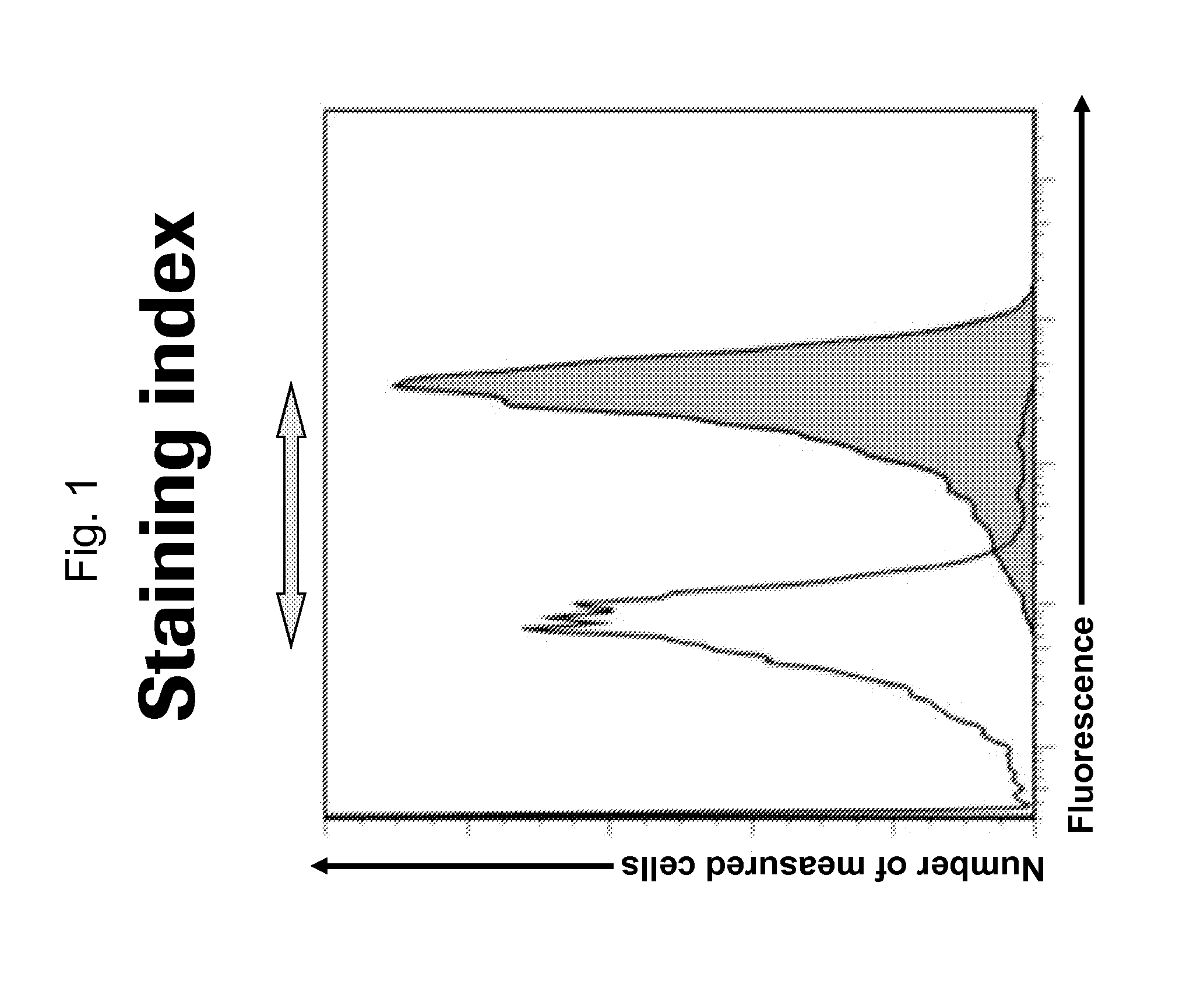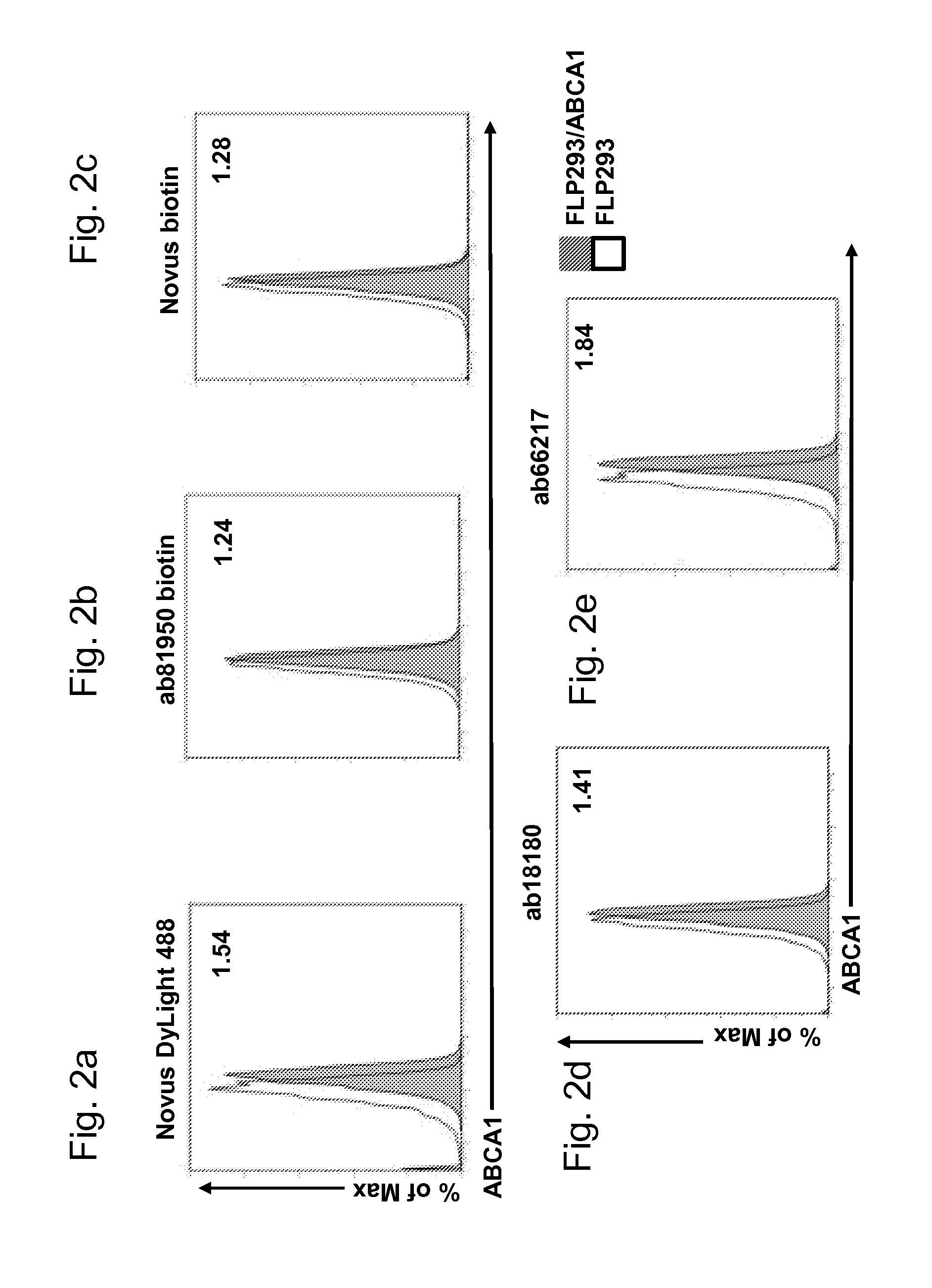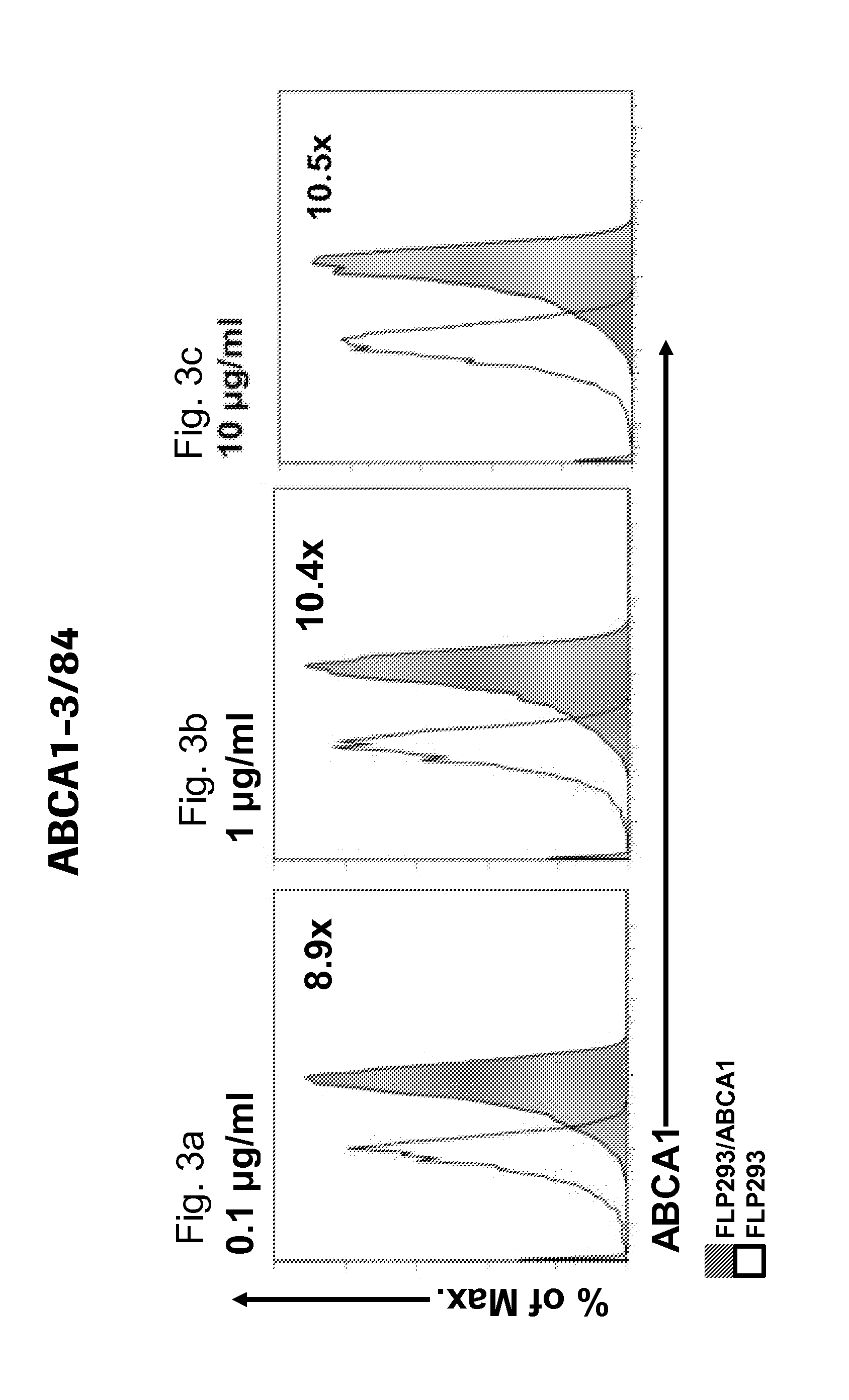Antibody binding to abca1 polypeptide
an abca1 polypeptide and antibody technology, applied in the field of antibodies binding to abca1 polypeptides, can solve the problem that commercially available anti-abca1 antibodies are not suitable for the detection of native abca1 polypeptides in tissue samples
- Summary
- Abstract
- Description
- Claims
- Application Information
AI Technical Summary
Problems solved by technology
Method used
Image
Examples
Embodiment Construction
[0058]The term “staining index” as used herein is defined as follows:
Stainingindex:MedianfluorescenceintensityABCA1expressingcelllineMedianfluorescenceintensityABCA1-negativeparentalcellline
[0059]The term “antibody” encompasses the various forms of antibody structures including but not being limited to whole antibodies and antibody fragments. The antibody according to the invention can be a humanized antibody, chimeric antibody, or further genetically engineered antibody as long as the characteristic properties according to the invention are retained.
[0060]“Antibody fragments” comprise a portion of a full length antibody, preferably the variable domain thereof, or at least the antigen binding site thereof. Examples of antibody fragments include diabodies, single-chain antibody molecules, and multispecific antibodies formed from antibody fragments. scFv antibodies are, e.g. described in Houston, J. S., Methods in Enzymol. 203 (1991) 46-96). In addition, antibody fragments comprise si...
PUM
 Login to View More
Login to View More Abstract
Description
Claims
Application Information
 Login to View More
Login to View More - R&D
- Intellectual Property
- Life Sciences
- Materials
- Tech Scout
- Unparalleled Data Quality
- Higher Quality Content
- 60% Fewer Hallucinations
Browse by: Latest US Patents, China's latest patents, Technical Efficacy Thesaurus, Application Domain, Technology Topic, Popular Technical Reports.
© 2025 PatSnap. All rights reserved.Legal|Privacy policy|Modern Slavery Act Transparency Statement|Sitemap|About US| Contact US: help@patsnap.com



